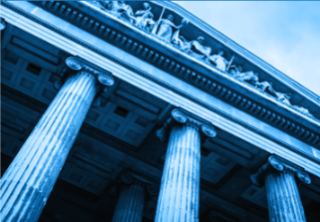JUNE 2025 - IP UPDATES
- June 30, 2025
- Newsletter
- JUNE 2025 NEWSLETTER
.png)
USPTO UPDATE
USPTO Discontinuing Accelerated Examination Program for Utility Applications
BY SAMEER GOKHALE
The U.S. Patent and Trademark Office (USPTO) announced that beginning on July 10, 2025, it will no longer accept petitions under the Accelerated Examination programfor utility patent applications. The Accelerated Examination program will remain in effect for design applications, which do not currently have an alternative expedited examination program.
The USPTO states that discontinuing the Accelerated Examination for utility applications will reduce pendency by freeing up examining resources to be devoted to older, unexamined utility applications. There has been a steady decline in the number of requests for Accelerated Examination and fewer than 100 applicants have utilized the program in each of the fiscal years 2014 to 2024.
The Federal Register announcement emphasizes that Applicants can still seek advancement of examination under the Track One program.
Read the final rule in its entirety here.
CAFC UPDATE
The Federal Circuit Affirms Moderna Win Against Alnylam Pharmaceuticals
BY SAMEER GOKHALE
On June 4, 2025, the Federal Circuit affirmed a final judgment that Moderna’s mRNA-based COVID-19 vaccine did not infringe Alnylam Pharmaceuticals’ U.S. Patent Nos. 11,246,933 and 11,382,979. The Federal Circuit agreed with the lower court that Alnylam acted as its own lexicographer in defining the claim term “branched alkyl.”
The above-noted patents are directed to lipid nanoparticles used to deliver nucleic acids which can be formed from cationic lipids. With respect to the “branched alkyl,” there was a dispute over “the degree of branching” that was required. Alnylam argued for a broad definition consistent with the ordinary meaning, which required only a carbon atom bound to “at least two other carbon atoms.” However, the district court adopted the definition set forth in the specification which required one carbon atom that “is bound to at least three other carbon atoms.”
Alnylam argued on appeal that the district court erred in holding that Alnylam acted as its own lexicographer. The Federal Circuit disagreed and looked to four indicators from the patents’ specification: section title, quotation marks, reference terms, and consistency to find that Alnylam provided an “express definition in the specification.”
The Court’s opinion can be found here.
AI UPDATE
Federal Judge Rules Copyrighted Books Are Fair Use For AI Training
BY SAMEER GOKHALE
On June 23, 2025, a federal judge in the U.S. District Court for the Northern District of California has ruled that AI company Anthropic didn’t break the law by training its chatbot Claude on millions of copyrighted books.
The Court looked at the four factors for determining whether a given use of a copyrighted work is a fair use, which are:
(1) the purpose and character of the use, including whether such use is of a commercial nature or is for nonprofit educational purposes;
(2) the nature of the copyrighted work;
(3) the amount and substantiality of the portion used in relation to the copyrighted work as a whole; and
(4) the effect of the use upon the potential market for or value of the copyrighted work.
Judge William Alsup found that only the second factor weighed in favor of the authors, but ultimately held that the AI system’s distilling from thousands of written works to be able to produce its own passages of text qualified as “fair use” under U.S. copyright law.
Notably, the Judge stated “In short, the purpose and character of using copyrighted works to train LLMs to generate new text was quintessentially transformative. Like any reader aspiring to be a writer, Anthropic’s LLMs trained upon works not to race ahead and replicate or supplant them — but to turn a hard corner and create something different. If this training process reasonably required making copies within the LLM or otherwise, those copies were engaged in a transformative use.”
This ruling is a win for the generative AI industry since the legal ramifications of using copyrighted work to train AI has always been a hot topic of debate.
To view the whole opinion, see here.
LIFE SCIENCES NEWS
Another Failed Skinny Label Case Seeks Certiorari
BY RICHARD KELLY
The skinny label provision, 21 U.S.C. § 355(j)(2)(A)(viii), is again the spotlight in Amarin Pharma, Inc., et al. v. Hikma Pharmaceuticals USA Inc, et al., 104 F.4th 1370 (Fed. Cir. 2024)reversing the decision of the Delaware District Court, 578 F. Supp. 3d 642 (D. Del. 2022), dismissing Amarin’s complaint against Hikma for inducing infringement of U.S. Patent 9,700,537 (“the ’537 patent”) and U.S. Patent 10,568,861 (“the ’861 patent”) under 35 U.S.C. § 271(b). Hikma is seeking Supreme Court review of the Federal Circuit’s reversal of the district court’s grant of a motion to dismiss Amarin’s infringement claim complaint for failure to state a claim. A blog post setting forth the facts, patent claims, and Magistrate’s recommendation to deny Hikma’s motion is here. The Magistrate had recommended denying the motion because she considered the allegations in the Amarin complaint to be plausible which is the evidentiary standard for denying a motion to dismiss a complaint for failure to state a cause of action. The most recent decision by the Federal Circuit, GlaxoSmithKline LLC v. Teva Pharms. USA, Inc., 25 F.4th 949 (Fed. Cir. 2022) (“GSK”), the case was tried to a jury after discovery and the jury held based on expert testimony that the allegedly skinny label still taught the infringing indication. It didn’t help that Teva had amended the label to include the infringing indication at the insistence of the FDA which resulted in a period where Teva’s label admittedly induced infringement.
The drug at issue is Vascepa® which is approved for two indications: (1) treatment of severe hypertriglyceridemia (the “SH indication”); and (2) cardiovascular risk reduction (the “CV indication”). Only the CV indication is protected by patents. Hikma filed its ANDA application before CV indication was approved and its label matched the Vascepa® for the SH indication. After Vascepa® was also approved for the CV indication, Hikma submitted Section viii statements for the listed patents. Hikma did not add the CV indication to its label keeping only the SH indication.
The issue is whether the Amarin complaint pled sufficiently plausible facts of inducement by Hikma to survive a motion to dismiss. Since motions to dismiss are decided before any discovery, the standard is whether the complaint’s allegations are plausible. There is no evidence for the court to weigh. The standard is no different in pharmaceutical cases than any other “whether a complaint plausibly alleges inducement in a pharmaceutical case is thus no different than the analysis in any other case. The court must determine whether the complaint plausibly alleges that the generic manufacturer “offer[ed] a product with the object of promoting its use to infringe, as shown by clear expression or other affirmative steps taken to foster infringement.” DSU Med. Corp. v. JMS Co., 471 F.3d 1293, 1305-06 (Fed. Cir. 2006) (en banc in relevant part).
The Federal Circuit noted that in 2020 Hikma issued press releases regarding its efforts to provide a generic Vascepa® . A March 2020 press release announced Hikma’s success in invalidating a patent protecting the SH use, referring to Hikma’s product as the “generic version” of Vascepa, which it described as “medicine that is indicated, in part, [to treat] severe (≥ 500 mg/dL) hypertriglyceridemia” (the SH indication). The press release also provided sales data for Vascepa® which included the sales of both the SH and CV uses. In May 2020 after it received FDA approval of its Vascepa® ANDA, it issued a press release that that Hikma had received FDA approval for its icosapent ethyl tablets, “the generic equivalent to Vascepa®.” The press release went on to quote Hikma’s president of generics that “[t]he approval for our generic version of Vascepa® is an important milestone towards bringing this product to market.” In September 2020 in announcing its success in the appeal of the decision in the SH litigation, it referred to its product as “Hikma’s generic version of Vascepa®” and “generic Vascepa®.” The press release went on to state:
Vascepa® is a prescription medicine that is indicated, in part, as an adjunct to diet to reduce tri-glyceride levels in adult patients with severe (≥ 500mg/dL) hypertriglyceridemia. According to IQVIA, US sales of Vascepa® were approximately $1.1 billion in the 12 months ending July 2020.
The sales were for all uses of Vascepa®of which 75% were for the CV indication. Following the ANDA approval Hikma began advertising its generic icosapent ethyl capsules in the “Therapeutic Category: Hypertriglyceridemia” and indicated that it was “AB” rated. The AB rating reflects the FDA’s determination that a generic drug is therapeutically equivalent to a branded drug when the generic drug is used as labeled. It does not reflect a decision of therapeutic equivalence for off-label use. Below the product summary on the website, in small lettering, is a disclaimer that reads: “Hikma’s generic version is indicated for fewer than all approved indications of the Reference Listed Drug.”
The Federal Circuit noted this is not a section viii case in which the patent owner’s claims rest solely on allegations that the generic manufacturer’s proposed label is “not skinny enough,” such that the label alone induces infringement. Instead, the complaint’s allegations turned it into an alleged infringement based on the generic manufacturer’s skinny label as well as its public statements and marketing of its already-approved generic product. This required the Federal Circuit to review the allegations as a whole and not piecemeal. The Court referred to GSK at 7 F.4th at 1338 for the proposition that a skinny label, in combination with marketing materials and press releases, provided substantial evidence to support a jury verdict of induced infringement. The Court also considered that unlike other skinny label related cases the appeal does not reach the Court after the parties had the opportunity to present the case to the lower court after discovery and at least a hearing on the evidence.
It was undisputed that the Hikma label in the “Indications & Usage” section did not provide an implied or express instruction to prescribe the drug for the CV indication. What Amarin relied upon was other portions of the label such as the clinical studies section, which describes statin-treated patients with the same cardiovascular event history and lipid levels covered by the asserted patents would be understood by physicians as a teaching that the product could be prescribed to treat cardiovascular risk. The original Vascepa® label had a warning against using it for the CV indication which was removed when Amarin received approval for the CV use. Hikma simply removed the warning which allegedly communicated to physicians that Hikma’s generic product could be used for the off-label CV indication. The Court indicated that the label alone was not sufficient for inducement but when taken with the Hikma press releases, did present a plausible claim of inducement by Hikma.
While, like the GSK decision, this decision is the death knell of the skinny label exception, it is a road map for generics on what NOT to do. A generic drug manufacturer should limit its press releases to simply announcing the approval of the generic for the uses on the generic label which is factually accurate and does not imply approval of any other uses. The AB rating is enough for the substitution of the generic drug for the off-label use for the indication carved out of the brand’s label by the druggist. Such substitution is required by every state and insurance company to save on the cost of the drug. For the brand products the opinion allows for the non-indication sections of the label, such as the sections on clinical trials and adverse events to provide for inducement since these sections are difficult if not impossible carve out as they provide information to the prescriber.
Since the Supreme Court, on June 23, 2025, has requested the Solicitor General’s comments on petition, it is difficult to predict how the Court will act on petition. Given the status of the litigation it would seem likely that the Court will allow the case to continue.










 Counseling & Strategic Advice
Counseling & Strategic Advice IP Transactions
IP Transactions Litigation
Litigation PTAB Proceedings
PTAB Proceedings Technology Transfer
Technology Transfer Trademark & Designs
Trademark & Designs U.S. Patent Procurement (Application Drafting & Prosecution)
U.S. Patent Procurement (Application Drafting & Prosecution)







